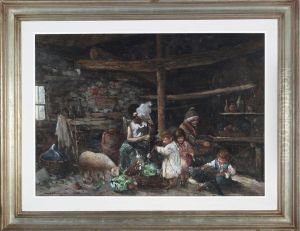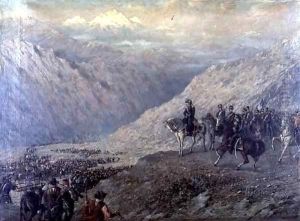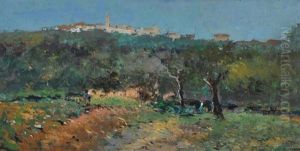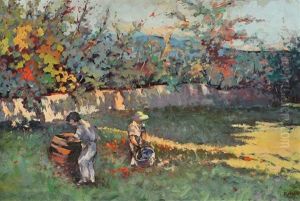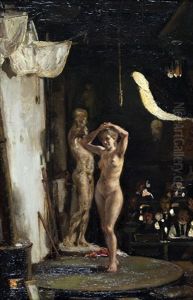Augusto Ballerini Paintings
Augusto Ballerini was an Italian painter, primarily known for his landscape and portrait works, whose career flourished in the late 19th century. Born in 1857 in Lucca, Italy, Ballerini showed an early interest in art, a passion that would guide the course of his life. He pursued his artistic training at the Academy of Fine Arts in Florence, where he was influenced by the Macchiaioli movement, a precursor to Impressionism that emphasized the use of patches of color in painting. This influence is evident in the luminous quality of his landscapes and the vibrant character studies he produced throughout his career.
Ballerini's work was characterized by a keen observation of natural and urban landscapes, imbued with a sense of light and atmosphere that was quite modern for his time. He traveled extensively throughout Italy, capturing the varied scenery from the bustling streets of Italian cities to the serene countryside. His paintings often depicted scenes of everyday life, with a particular focus on the interplay of light and shadow, which he rendered with swift, confident brushstrokes.
In addition to landscapes, Ballerini was also renowned for his portraits, which were celebrated for their psychological depth and sensitivity. He had a unique ability to capture the essence of his subjects, a skill that made his portraits highly sought after by the Italian elite. Despite his success as a portraitist, it was his landscapes that garnered the most acclaim, reflecting his profound connection to the Italian landscape and its cultural heritage.
Ballerini's career was cut tragically short when he died in 1897 at the age of 40. Despite his brief career, his work left a lasting impact on the Italian art scene, influencing subsequent generations of Italian painters. His paintings are now held in several prestigious collections and museums, where they continue to be admired for their luminosity, expressiveness, and technical mastery. Ballerini's legacy is that of an artist who captured the beauty and complexity of the world around him, making a significant contribution to the development of late 19th-century Italian art.

